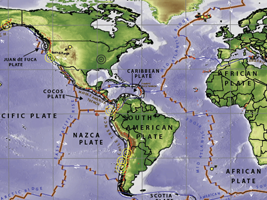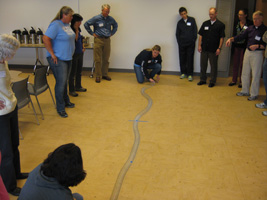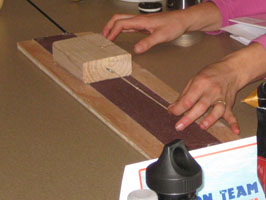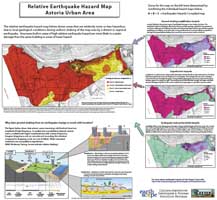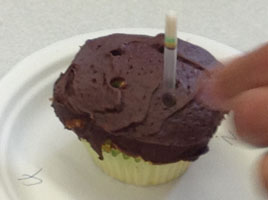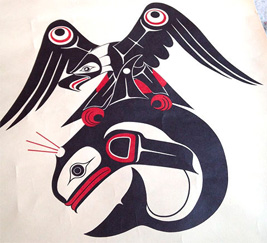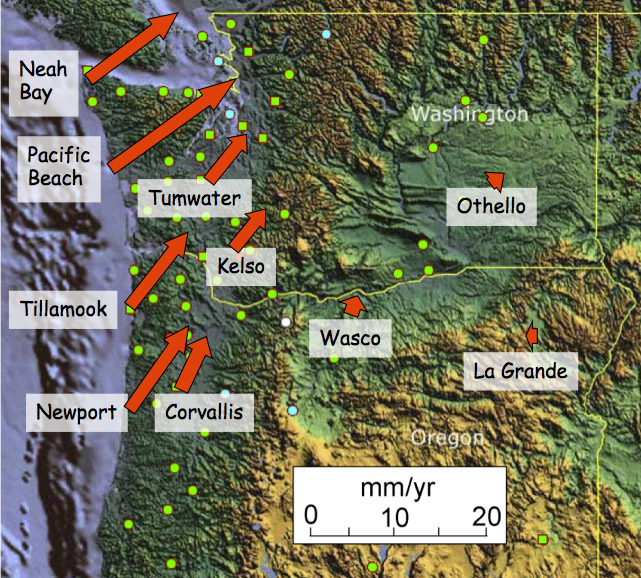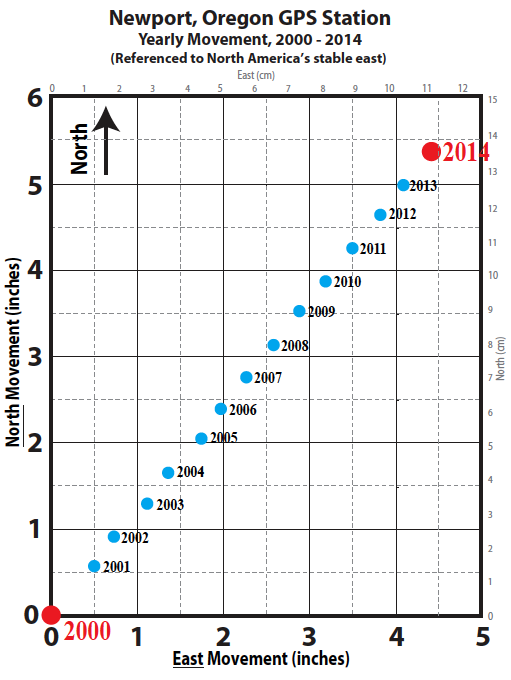Teaching Resources
![CEETEP participants practice using a tsunami wave tank model. [Beth Pratt-Sitaula, CWU & UNAVCO] CEETEP participants practice using a tsunami wave tank model.](/sites/ceetep.oregonstate.edu/files/resources/forks-tsunami-wave-tank.jpg) These resources are all related to earthquake and tsunami science, hazard, and preparedness. The materials featured here are those most strongly emphasized in CEETEP workshops. Some resources pertain to plate tectonics and earthquake faults in general but others are specific to the USA’s Pacific Northwest (Cascadia) and science from the EarthScope geophysics initiative.
These resources are all related to earthquake and tsunami science, hazard, and preparedness. The materials featured here are those most strongly emphasized in CEETEP workshops. Some resources pertain to plate tectonics and earthquake faults in general but others are specific to the USA’s Pacific Northwest (Cascadia) and science from the EarthScope geophysics initiative.
For even more teaching and learning resources on these topics, try visiting the Teachers on the Leading Edge project website.
For presentations and other information from a specific CEETEP workshop, visit our Workshops page.
Topics:
Plate Tectonics and Earthquakes
The teaching and learning resources here all pertain to the fundamentals of plate tectonics and earthquakes as featured in CEETEP workshops . Teachers on the Leading Edge and IRIS have even more resources on this topic. For presentations and other resources from a specific CEETEP workshop, visit our Workshops page.
Presentations |
|
|
PowerPoint presentations introducing fundamental concepts of Plate Tectonics and Earthquakes. May be used either as learning aids for educators or edited for their own presentations. |
|
Activities |
|
|
Animations: Seismic Wave Motions – Primary [.mov], Secondary [.mov], Raleigh [.mov], Love [.mov] Animation: Building Response to Seismic Waves |
|
|
|
|
|
|
|
|
|
|
Earthquake and Tsunami Hazards
The teaching and learning resources here all pertain to the basics of earthquake and tsunami hazards as featured in CEETEP workshops. Teachers on the Leading Edge and IRIS have even more resources on this topic. For presentations and other information from a specific CEETEP workshop, visit our Workshops page.
Presentations |
|
| PowerPoint presentations introducing fundamental concepts of Earthquake and Tsunami Hazards. May be used either as learning aids for educators or edited for their own presentations. | |
Activities |
|
|
|
|
Video of classroom building strength demonstration Animations: Building strength – Building Collapse , Retrofitted |
|
|
Activity Instructions |
Cascadia Tectonics Earthquakes and Tsunami
The teaching and learning resources here all pertain to the basics of earthquake and tsunami hazards in Cascadia as featured in CEETEP workshops . Teachers on the Leading Edge, IRIS, and UNAVCO have even more resources on this topic. For presentations and other resources from a specific CEETEP workshop, visit our Workshops page.
Presentations |
|
|
Presentation introducing fundamental concepts of Earthquake and Tsunami that are particularly tailored for the Pacific Northwest region (Cascadia). May be used either as learning aids for educators or edited for their own presentations. Associated animations are included as separate files. |
|
Cascadia Earthquakes and Tsunami presentationAssociated animations: |
|
Native American Indigenous Oral Histories and Disaster Preparedness presentationAssociated videos: |
|
Activities |
|
|
Activity Instructions |
Investigating Tsunami Inundation Factors
|
Activity Instructions |
|
Activity Instructions |
|
Activity Instructions |
Pacific Northwest Fault Block Model
|
Activity Instructions |
|
Activity Resources |
Information and Maps |
|
Introduction to Pacific Northwest Plate Tectonics, Earthquakes, and VolcanoesDocument provides a brief (12 page) introduction to regional plate tectonics, earthquakes, and volcanoes of the Pacific Northwest. The focus is mainly on the subduction zone (coast to Cascade Mountains) because that is where most of the earthquakes and volcanoes occur, and where tsunamis can be generated. |
Document |
Pacific Northwest Tectonic Setting and Geology PosterThis poster includes maps of the physical geography, bedrock geology, physiographic provinces, and tectonics of Washington and Oregon. |
Poster |
Pacific Northwest Plate Tectonics Map and Cross-sectionThis CEETEP poster includes a schematic map and cross-section of Cascadia plate tectonics. |
Poster |
EarthScope and Geodesy (GPS and Seismology)
The teaching and learning resources here all pertain to EarthScope science as featured in CEETEP workshops. EarthScope, IRIS, and UNAVCO have even more resources on this topic. For PowerPoint presentations and other resources from a specific CEETEP workshop, visit our Workshops page.
Presentations |
|
| PowerPoint presentation introducing fundamental concepts of EarthScope Science, Geodesy, and Seismology with a particular emphasis on research related to Cascadia. May be used either as learning aids for educators or edited for their own presentations. Associated animations are included as separate files. | |
USArray Visualizations |
|
Introduction to Reading GPS Plots |
|
Episodic Tremor and Slip ("Slow" slip earthquakes) |
|
Animation: Types of Motion in a Subduction Zone
|
|
Animation: Episodic Tremor and Slip (ETS)
|
|
Animation: What GPS Tells us About Future Earthquakes
|
|
Animation: GPS and Earthquake Early Warning Systems
|
|
Activities |
|
USArray Seismic Wave Visualizations Educator Guide
|
|
Introduction to GPS (GPS “gumdrop” activity)
|
Original Activity Instructions |
GPS Part 2 - Locked and Loading
|
Activity Instructions |
Episodic Tremor and Slip (ETS)
|
Activity Instructions |
GPS Cards
|
Washington transect Northern Oregon transect Southern Oregon transect Northern California Activity instructions for a related exercise combining nine stations' data |
Preparedness and Mitigation
The teaching and learning resources here all pertain to the basics of earthquake and tsunami preparedness and hazard mitigation as featured in CEETEP workshops. The Federal Emergency Management Administration (FEMA), Red Cross, and State Emergency Management agencies (WA, OR, CA) have even more information and resources on this topic. For PowerPoint presentations and other resources from a specific CEETEP workshop, visit our Workshops page.
Presentations |
|
Activities |
|
Planning and Emergency Backpack
|
Activity Instructions |
Earthquake Hazard Inventory and Mitigation Planning
|
Activity Instructions |
Tsunami Vertical Evacuation Structures
|
|
Information and Maps |
|
|
Washington |
|
|
Oregon |
|
Cascadia Field Trips
Field trips can provide excellent opportunities for seeing evidence of past Cascadia earthquakes and tsunami, visiting EarthScope instruments measuring ground movement, learning about both the benefits and challenges of living in a geologically active region, and discussing opportunities for community hazard mitigation.
Field trip guides
All CEETEP workshops include a field trip day during which participants visit sites featuring earthquake and tsunami geology and preparedness.
- Neah Bay-Quillayute, Washington (Olympic Peninsula)
- Aberdeen-Westport, Washington (Grays Harbor)
- Southwest Washington (Pacific County)
- Coos Bay, Oregon (Southern Oregon)
- Arcata-Crescent City, California (Northern California)
Virtual field experiences
Virtual field experiences (VFE) offer a way to share field trip sites with learners unable to visit in person. VFEs have been prepared for two areas in coastal Cascadia (southwest Washington and northwest Oregon) that showcase evidence used to build our understanding of past earthquake/tsunami and GPS stations measuring ongoing deformation.
Partner Organizations
CEETEP Partner Organizations
Organizations collaborating with CEETEP and/or working parallel on related aims of increasing earthquake and tsunami resilience provide an wealth of additional information and resources.
|
DOGAMI The Oregon Department of Geology and Mineral Industries |
|
EarthScope EarthScope |
|
HMSC Hatfield Marine Science Center |
|
IRIS Incorporated Research Institutions for Seismology |
|
RCTWG Redwood Coast Tsunami Work Group |
|
SCEC Southern California Earthquake Center |
|
TOTLE Teachers on the Leading Edge |
|
UNAVCO UNAVCO is the National Science Foundation's geodetic facility. |
|
USGS U.S. Geological Survey |
|
WA DNR Washington State Department of Natural Resources |


